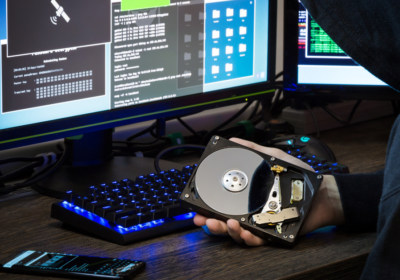Closed-circuit television (CCTV) systems have become an indispensable tool for surveillance and security in various settings, from homes to businesses and public spaces. However, as technology advances, so do the risks of cyberattacks and unauthorized access to these systems. The consequences of a hacked CCTV system can be severe, including privacy breaches, property theft, or even compromised safety. In this comprehensive guide, we will delve into essential measures and strategies to safeguard your CCTV system from potential professional hackers. Whether you’re a homeowner, a business owner, or a security professional, these tips will help you enhance the security of your surveillance infrastructure.
**Section 1: Understand the Risks (300 words)**
—————————————————
Before diving into protective measures, it’s essential to grasp the potential risks and vulnerabilities that can make your CCTV system susceptible to hacking:
1. **Unauthorized Access**: Hackers gaining access to your CCTV system can potentially view live feeds, recorded footage, or even control the cameras remotely.
2. **Data Theft**: Hacked CCTV systems can expose sensitive footage and data, leading to privacy violations and legal consequences.
3. **Exploitation for Criminal Activities**: Criminals may target vulnerable CCTV systems to monitor security vulnerabilities, enabling them to plan thefts or other unlawful activities.
4. **Distributed Denial of Service (DDoS) Attacks**: Hackers can hijack your CCTV cameras to launch DDoS attacks on other systems, causing network disruptions.
5. **Ransomware**: Some attacks involve encrypting CCTV system data and demanding a ransom for its release.
**Section 2: Secure the Network (300 words)**
————————————————–
Your CCTV system is only as secure as the network it’s connected to. Implementing robust network security measures is a fundamental step in protecting your surveillance system:
1. **Change Default Credentials**: Immediately change default usernames and passwords for your CCTV cameras and associated devices. Use strong, unique passwords and consider two-factor authentication (2FA) if supported.
2. **Network Isolation**: Isolate your CCTV system from your primary network by setting up a separate VLAN (Virtual Local Area Network) or using a dedicated network.
3. **Firewall Protection**: Implement a firewall to filter and monitor incoming and outgoing network traffic. Configure it to allow only essential traffic to your CCTV system.
4. **Regular Updates**: Keep all network devices, including cameras, recorders, and routers, up to date with the latest firmware and security patches.
5. **Network Monitoring**: Continuously monitor network traffic for unusual patterns or unauthorized access attempts.
**Section 3: Camera Security (300 words)**
————————————————
Your cameras themselves can be vulnerable points in your CCTV system. Here’s how to secure them:
1. **Regular Firmware Updates**: Ensure that your cameras’ firmware is regularly updated to patch vulnerabilities and improve security.
2. **Disable Unnecessary Features**: Disable any unnecessary camera features, such as UPnP (Universal Plug and Play), that can potentially expose your cameras to threats.
3. **Segmented Access**: Limit camera access to only authorized personnel and restrict access to the camera’s web interface to trusted IP addresses.
4. **Encrypt Video Streams**: Use encryption protocols like HTTPS or SSL/TLS for secure video transmission between cameras and the recording device.
5. **Physical Security**: Install cameras in secure locations to prevent physical tampering or theft.
**Section 4: Secure the Recording Device (300 words)**
————————————————————
The device that stores your CCTV footage is a critical component of your system’s security. Here’s how to protect it:
1. **Strong Passwords**: Use strong, unique passwords for the recording device’s admin and user accounts. Change these passwords regularly.
2. **Access Control**: Limit access to the recording device to authorized users only. Disable default accounts and restrict user privileges.
3. **Encrypted Storage**: Encrypt stored video footage to protect it from unauthorized access even if physical access to the device is gained.
4. **Regular Backups**: Regularly back up your recorded footage to an external device or cloud storage. This ensures you have a copy of critical footage in case of a breach.
5. **Enable Alerts**: Configure the device to send alerts in case of unusual login attempts, system changes, or unauthorized access.
**Section 5: Monitoring and Detection (300 words)**
————————————————————-
To proactively protect your CCTV system, consider implementing monitoring and detection mechanisms:
1. **Intrusion Detection Systems (IDS)**: Set up IDS to detect and alert you to suspicious activities or unauthorized access attempts.
2. **Logging and Auditing**: Enable detailed logs and audits for your CCTV system, which can be helpful for forensic analysis in case of a breach.
3. **Regular Audits**: Periodically review your system logs and access records to identify any unusual patterns or unauthorized access.
4. **Real-time Alerts**: Configure your system to send real-time alerts for any potential security breaches, such as multiple failed login attempts.
**Section 6: Employee Training (200 words)**
————————————————-
Educating your employees or anyone with access to the CCTV system is crucial in maintaining its security:
1. **Security Awareness Training**: Provide training on security best practices, including the importance of strong passwords, identifying phishing attempts, and recognizing suspicious behavior.
2. **Access Control**: Ensure that only authorized personnel have access to the CCTV system and its controls.
3. **Reporting Procedures**: Establish clear procedures for employees to report any unusual activities or security concerns related to the CCTV system.
**Conclusion (150 words)**
——————————-
Securing your CCTV system against hacking threats is an ongoing process that demands vigilance and a commitment to best practices in cybersecurity. By understanding the potential risks, implementing robust security measures, and maintaining regular monitoring and updates, you can significantly reduce the chances of unauthorized access to your surveillance system. Remember that the security of your CCTV system not only protects your property and privacy but also contributes to the safety and well-being of your community.



